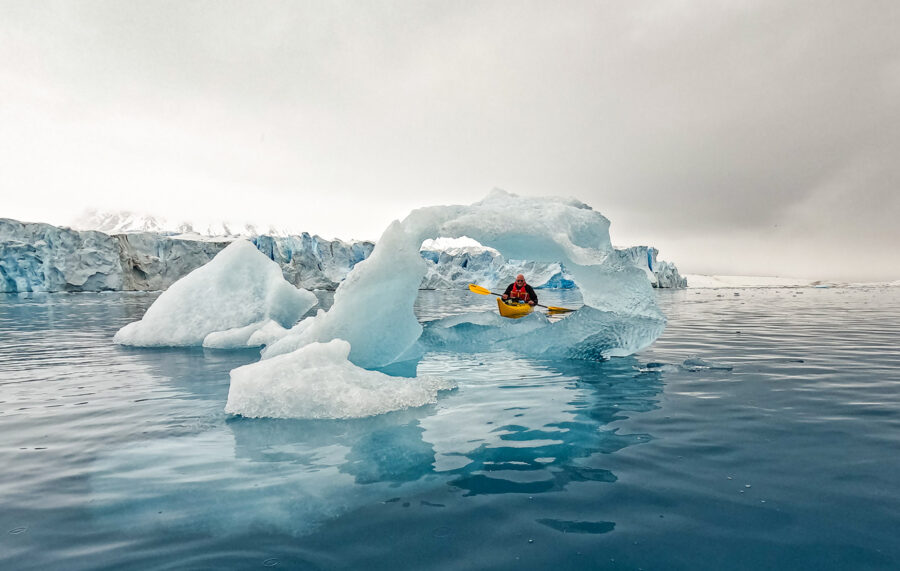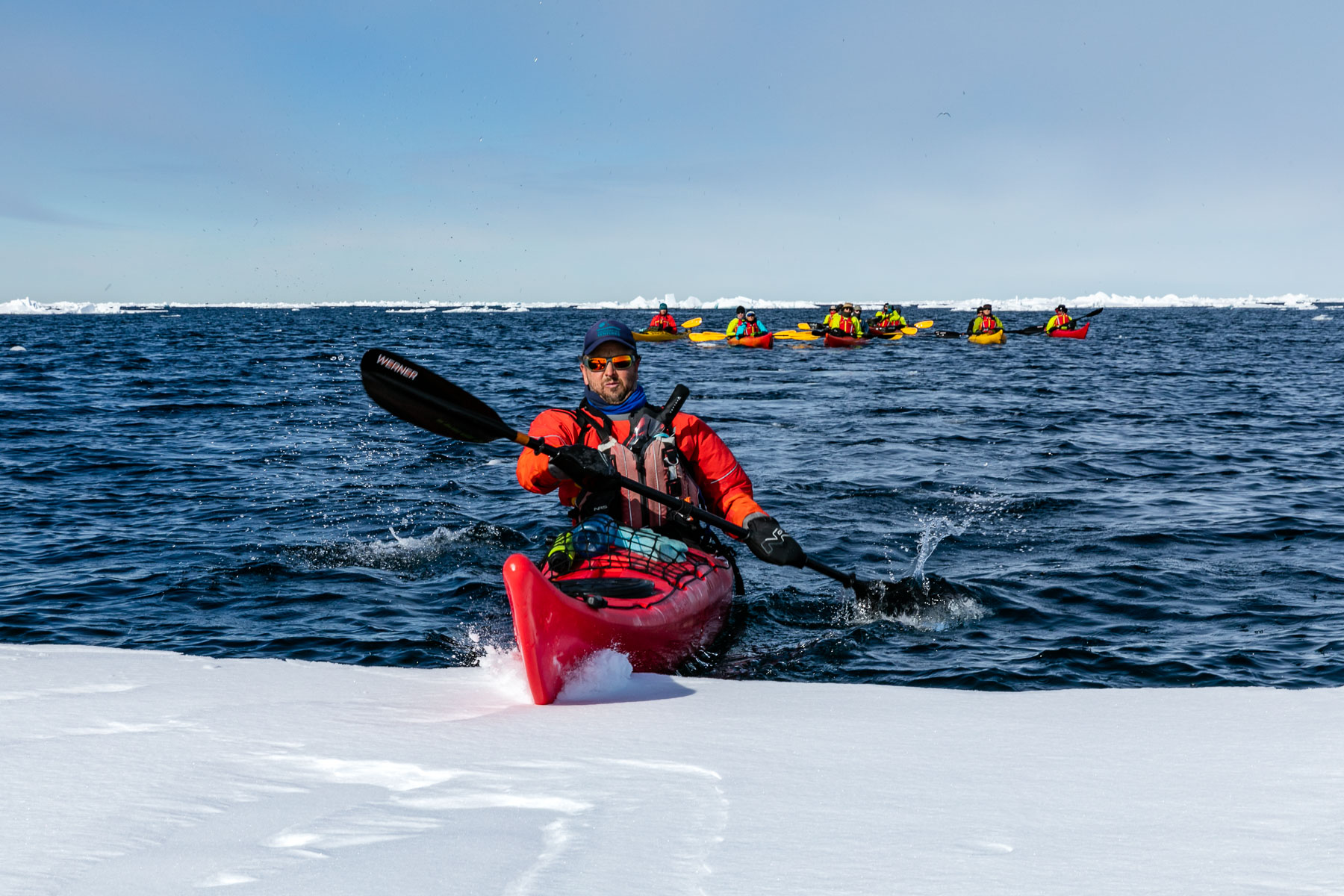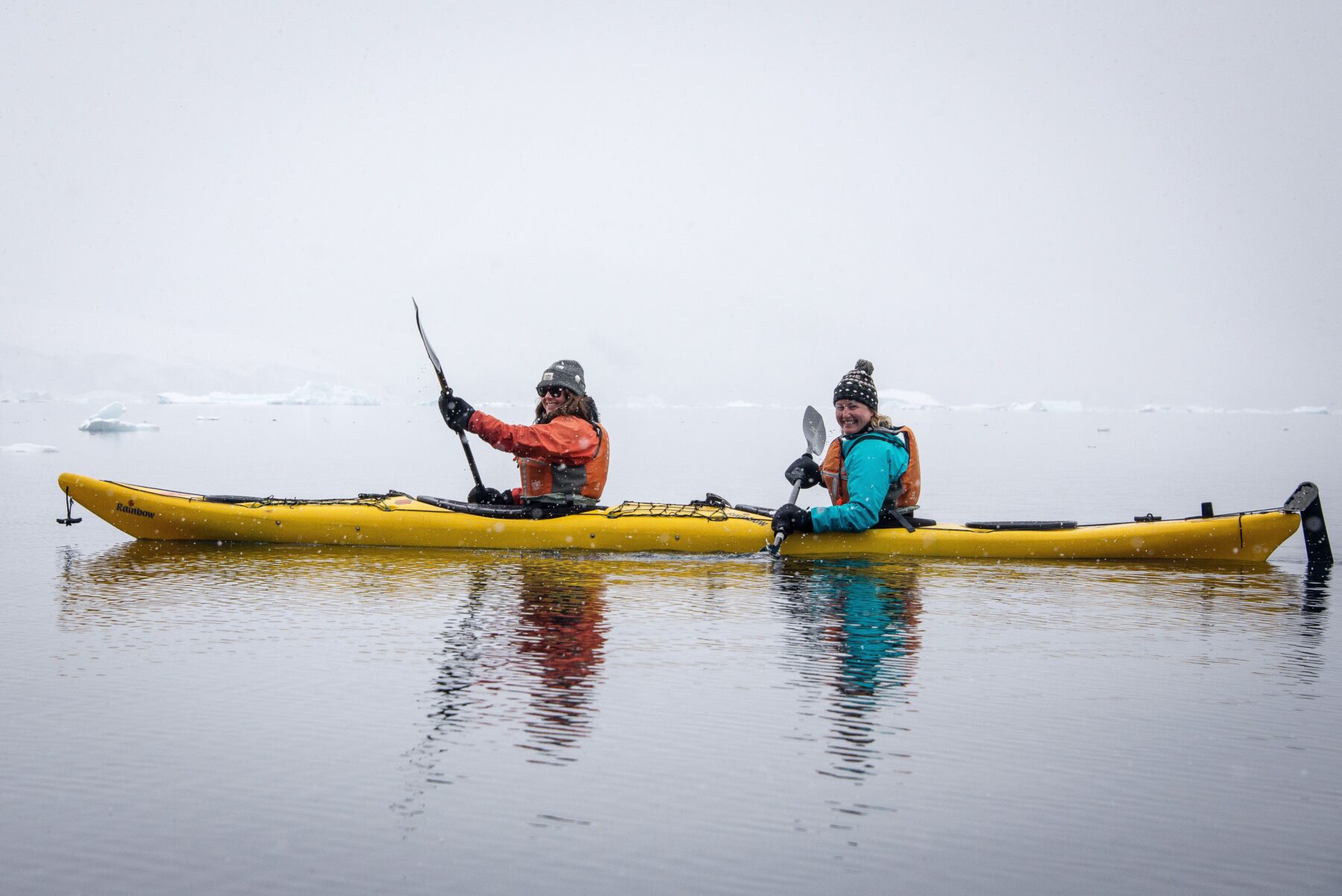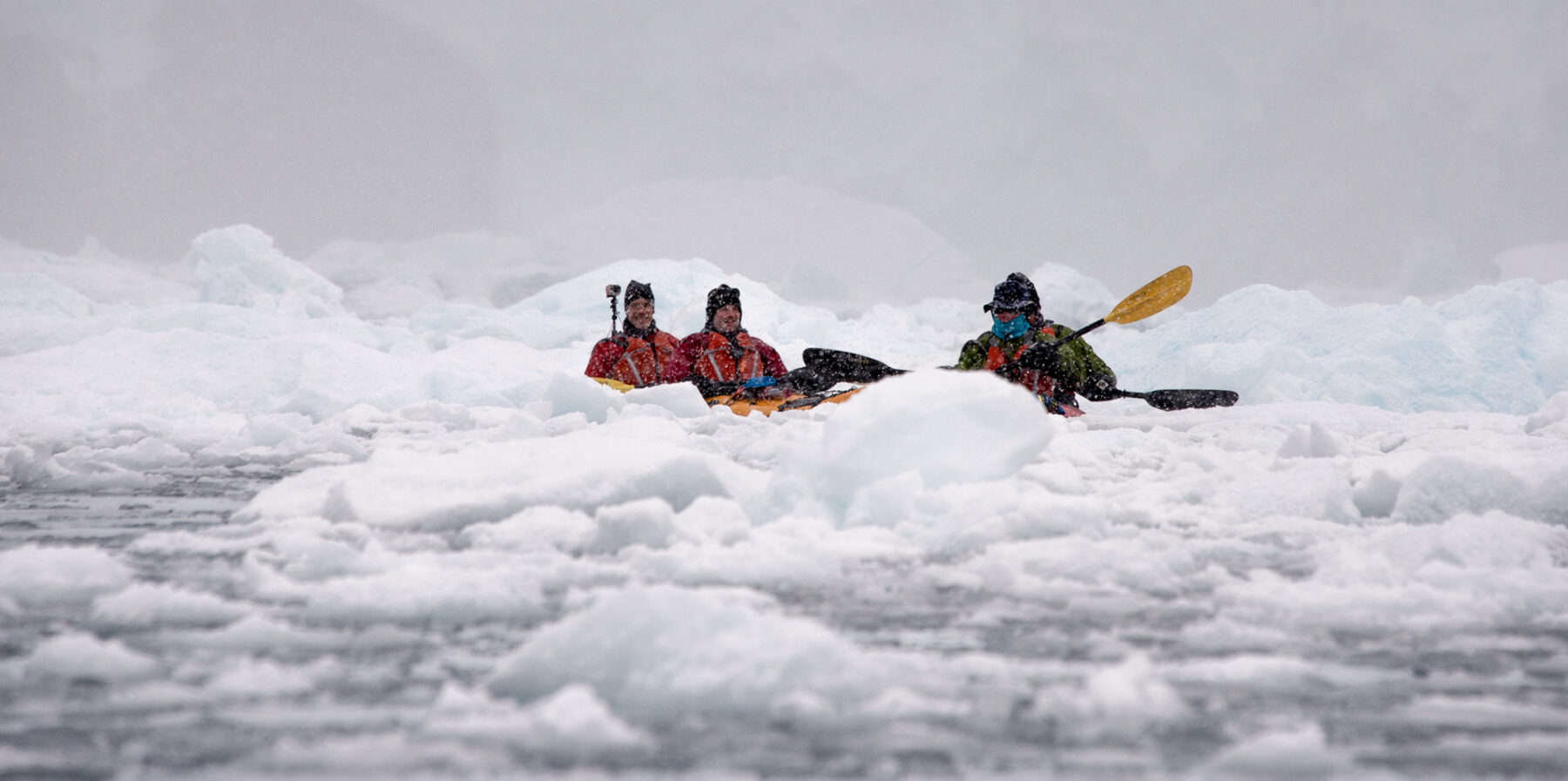Paddle Pulse: Thrills and chills of cold-water sea kayaking

Fresh from a 10-day expedition cruise in the Arctic haven of Svalbard, and now back home in wintry Tasmania with snow dusting Kunanyi and icy winds blowing up from Antarctica, it feels fitting that the second instalment of Paddle Pulse should focus on cold-water sea kayaking.
Svalbard, which literally translates to ‘the cold edge’ in Old Norse, is awesome – in the truest sense of the word. On our expeditions, we travel aboard a reconditioned Soviet-era research vessel aptly called the Polar Pioneer. And while paddling is optional on those trips, it really is an unmatched way to experience the glaciated terrain, jagged peaks and spot wildlife including polar bears on the sea ice.
On that recent expedition, we were treated to calm waters and brilliant blue skies – but even in perfect conditions, the reality of the extreme environment is always present, especially when I’m not just responsible for my own comfort and safety, but that of our guests as well.
You may consider yourself firmly in the camp of fair-weather paddler but take my word that getting outside your comfort zone can offer unparalleled rewards. While the raw, remote beauty of the polar regions is the stuff of lifelong memory-making, paddling in Australian winter also has its unique charms. In the end, it’s about getting closer to nature in all her moods.

To that end, here are my top 10 tips to ensure you’re prepared for your next cold-water kayaking adventure:
1. Dress for success
Water can strip heat fast, even in milder climates, so it is vital to consider how you are dressing for your paddle, taking into consideration both the water temperature and the air temperature. In the polar regions, where immersion could have such serious consequences and hypothermia can set in within minutes, dressing for the water temperature by using a dry-suit and appropriate layering is a must.
A typical polar outfit includes base layer thermals, mid-weight fleece, warm socks and, crucially, a fully-enclosed drysuit. Be sure to check the integrity of your drysuit gaskets – the latex cuffs around your wrists, neck, and ankles that ensure the suit remains waterproof.

Besides maybe a few icy rivers in the middle of winter, most paddling locations in Australia are mild compared to the polar regions. Nonetheless, it is always critical that you take greater precautions with planning your clothing in cold-weather environments, whether you are planning to paddle for an hour or a week.
The rules for dressing for cold-water paddling are similar to other cold weather activities such as skiing or alpine walking – use layers and opt for materials like wool (or a synthetic equivalent) that remains warm while wet (as opposed to cotton, which strips body heat when wet) and ensure you have protective wind and waterproof layers. You may also want to pack an extra layer, like another thick jacket, for any time spent on land and outside of the protection of your kayak skirt.
2. Embrace the hat-trick
It may sound odd, but carrying several hats is another trick I’ve learned over the years. I typically have at least three with me: a skull cap or wool liner, a beanie, and a sun hat for UV protection, especially in areas where the sun’s rays are magnified by ice and snow reflection.
The head is a significant avenue for heat regulation, so keeping it toastie will reap dividends for your overall comfort!
3. More handy advice
Cold hands can quickly ruin a paddling experience, so for this I recommend pogies. Like ‘sleeping bags’ for your hands, they Velcro onto the paddle to protect your fingers from the water and wind. At a pinch (or on a budget) dish gloves with additional woollen gloves underneath can do the job.

4. Stay hydrated
The cold can deceive you into thinking you’re not thirsty but be sure to carry ample water. Sea kayaking is a good physical workout and staying hydrated is crucial.
5. The sugar hit
Cold weather saps more energy and I have had many occasions when a little something sweet (and preferably hot) has helped pep up a weary paddler and give us the strength to do those extra miles.
6. Expect the unexpected
While you hope and plan for the best, always prepare for unexpected scenarios – think icy immersion or a delay in returning to the ship. Our safety kit includes bothy bags for temporary emergency shelter, hand warmers, spare clothing, sleeping bags and hot water thermoses.

7. Watch the wind
Cold winds can lead to faster heat loss. When paddling, pay attention to the wind direction and consider adjusting your course to minimise exposure. This often results in a more enjoyable paddling experience anyway, as you have to get closer to shore and often take a more scenic route. Plan your route to ensure you have wind-free or sheltered landing sites where possible, as you are most susceptible to heat loss once you stop or get out of your kayak.
8. Charge your devices
Cold weather drains battery power quickly so whether it is your VHF radio, camera or phone, be sure everything is fully charged so you can call for help or make sure you don’t miss that special photo opportunity.
9. Keep it in reach
If you are carrying anything that you may need on the water, make sure it is easily accessible without opening hatches or removing your spray skirt if possible. It is Murphy’s law that the day you are out sea kayaking you will be needing those hand warmers, spare hats and food just as the weather turns. If you are not wearing a windproof layer like a cag when you start your paddle, make sure it is accessible on the water.

10. Back to basics
While this is something you should do on any sea kayaking outing, the stakes are always higher in cold weather environments so be sure to follow the basic rules: check the weather, tell people where you are going, dress and pack appropriately for your intended route, carry a communication device and preferably travel in a group.
With the right preparation, respect for the conditions and, ideally, guidance from experienced professionals, cold-water kayaking transforms from a daunting prospect into a safe, exhilarating adventure.
Stay tuned for more insights, and until then – stay warm!
Toby Story is Senior Guide and Director at Southern Sea Ventures, which pioneered commercial sea kayaking trips to Antarctica in the 1990s and continues to run expedition cruises all over the world, including in the polar regions, the subantarctic islands and southern Tasmania.

